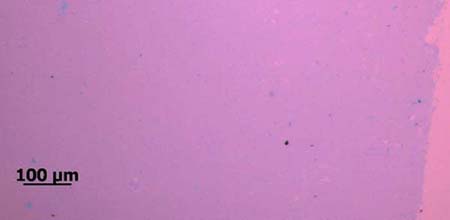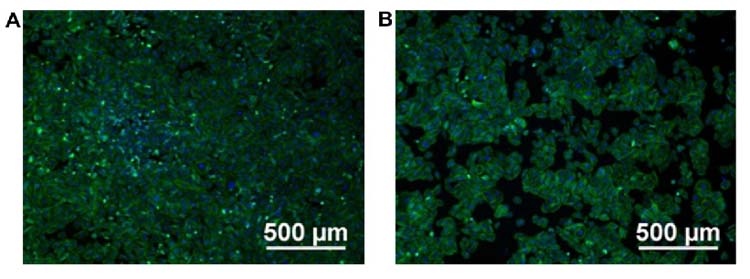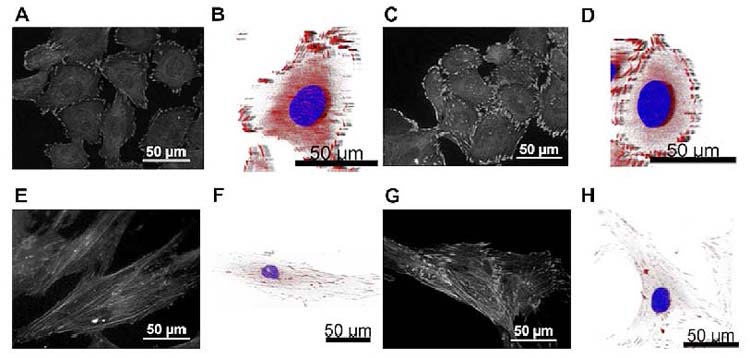Graphene (G)
Graphene is a new two-dimensional material, which attracts a lot of attention due to its unique structure and electronic properties. The exceptional electrical and mechanical characteristics of graphene can be utilized in new electronic devices, electromechanical resonators and/or nanocomposites. Due to its conductivity graphene has also a great potential in electrical bio-sensing applications. However, the prerequisite for use of graphene in biological or medical applications is its biocompatibility. The addressing of toxicological issues of graphene is also necessary with regard to its safety and evaluation of health and ecological risks.

Optical microscope image of CVD graphene film on a SiO2/Si substrate.

Fluorescent images of human cells incubated on graphene and SiO2 substrate for 48 h:
(A) human osteoblasts on graphene, (B) human osteoblasts on SiO2 substrate (actin filaments are stained
green and nuclei are stained blue). The scale bar is 500 µm.

Fluorescent images of FAs (staining of vinculin) formed in human cells on different substrates: (A)
osteoblasts on graphene (2D image froman epi-fluorescent microscope), (B) osteoblasts on graphene
(3D image froma confocal microscope), (C) osteoblasts on SiO2 (2D image), (D) osteoblasts on SiO2 (3D image),
(E) MSCs on graphene (2D image), (F) MSCs on graphene (3D image), (G) MSCs on SiO2 (2D image) and H) MSCs on SiO2
(3D image). The scale bar is 50 µm.
